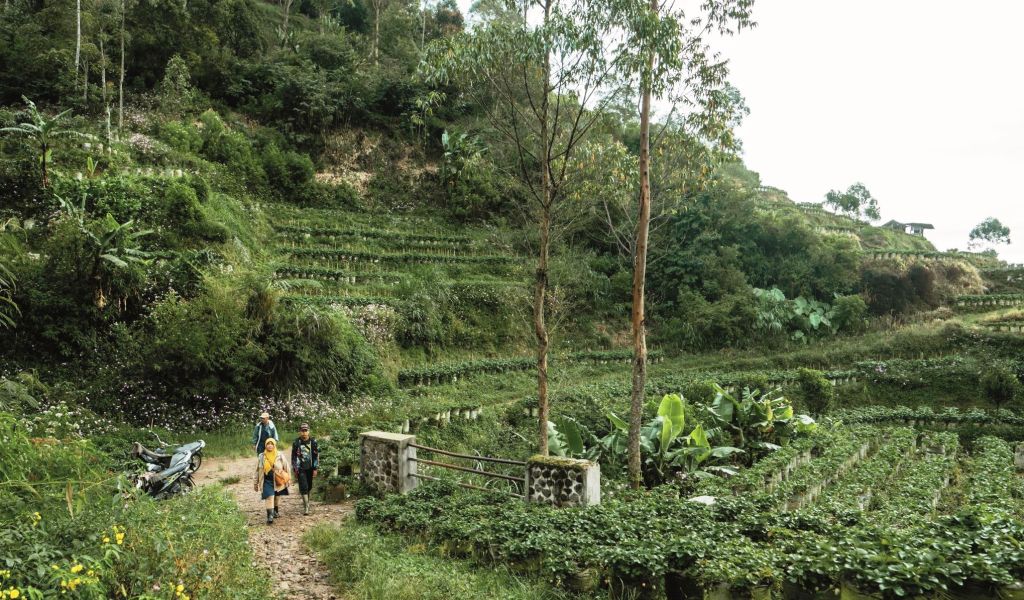Social forestry brings opportunities for national and local development in Indonesia

Indonesia’s national development agenda, known as Nawa Cita, recognizes social forestry’s role in sustainable forest management. President Joko Widodo introduced the agenda in 2014. It sets a target of allocating 12.7 million hectares of land for social forestry by 2030. In April 2023, more than 5.3 million hectares of forest area have been allocated to be managed legally by more than one million households through social forestry schemes.
On 9 May 2023, RECOFTC and the Non-Timber Forest Product-Exchange Network (NTFP-EP) held a national workshop in Jakarta to support Indonesia’s national development agenda. The workshop focused on challenges and opportunities for social forestry business development and investment and drew more than 70 participants. It was supported by the UN-REDD Programme in Cambodia, Lao PDR and Indonesia, with the theme Climate Change Mitigation through Social Forestry in ASEAN countries.
Investing in social forestry brings opportunities
The UN-REDD Programme was implemented in Indonesia in collaboration with the Ministry of Environment and Forestry (MOEF) to promote and accelerate private-sector investment in social forestry. Workshop participants discussed case studies that identify and document business models of successful social forestry and private sector partnerships that can potentially accelerate investment.
Mahfud, from Indonesia’s Directorate General of Social Forestry and Environmental Partnerships, said that social forestry can reduce greenhouse gas emissions, deforestation and forest degradation.
“Social forestry also opens opportunities for sustainable forest management practices that can improve community welfare through community-based business development activities,” she said in her opening speech.
The Indonesian government has issued various policies to maintain sustainable forests and people's welfare. These include introducing upstream-downstream market integration, increasing forest productivity, simplifying regulations for investment and synchronizing central and regional tasks and authorities related to production forests. Other policies focus on increasing industrial and export competitiveness, diversifying forest product products, and granting access to managing production forests to communities and small and medium enterprises.
Social forestry provides an opportunity for forest village communities to improve their welfare. By granting licenses of 35 years or more, these communities can manage existing resources and maximize benefit sharing.
Administrative challenges remain
According to MOEF, Indonesia’s government has issued 8,068 social forestry decrees. It has allocated 5.3 hectares to social forestry, which is managed by more than one million households. However, problems persist with licensing and administrative barriers. Forest farmers’ groups find the requirements to obtain and maintain licences cumbersome.
“The cooperative that I lead was frustrated by the lengthy administrative process,” said workshop participant Sudarmi. “But with the help of many parties, we managed to get a community-based forest management certificate about a month ago.”
After obtaining a social forestry permit, the community is expected to be able to manage forest resources to develop businesses. At this stage, the community encounters the next challenge, the facilitation process due to the insufficient number of the Government’s assistants compared to the area and number of groups that require it.
"We must resolve other challenges, too,” said Gamma Galudra, director of RECOFTC Indonesia. “We must optimize the use of forest products by license holders, especially in developing business opportunities and social enterprises."
Government support is crucial
Formal social forestry models have been shown to improve communities’ livelihood through empowerment, resource mobilization and sustainability. In Indonesia, there are five formal social forestry models: village forests, community forests, community plantation forests, customary forests and forestry partnerships.
"The community's governance of social forestry businesses and small enterprises still requires transformation, in terms of markets, capital and assistance," said Mahfud.
The Indonesian government commits to supporting increased investment and developing business opportunities for communities practising social forestry. There is a plan to develop infrastructure to connect economic centres to markets and to help people market products from social forestry areas.
“The discussions opened new insights,” said Sudarmi. “I came here to share my experience from Central Java but I feel I learned much more from other participants."
###
[Disclamer] The story was originally published in Bahasa Indonesia. It was translated into English and adjusted for style.
RECOFTC's work in the story was made possible in collaboration with NTFP-EP and support from the United Nations Collaborative Programme on Reducing Emissions from Deforestation and Forest Degradation in Developing Countries (UN-REDD), known as UN-REDD Programme.

